🌍 Global Trade in 2025: Economic Outlook Amid Geopolitical Flux
From renewed U.S.–China tensions to disruptions in the Red Sea and fragile EU cohesion, global trade in 2025 is navigating an era of volatility and recalibration. As traditional trade corridors face disruptions, new alliances and economic pivots are reshaping global value chains. Multinationals and SMEs alike are forced to rethink strategies in a world where supply chain agility and geopolitical forecasting matter more than ever.
In this article, we explore the macroeconomic outlook, major geopolitical flashpoints, regional trade realignments, and strategic business responses shaping the economic future of 2025. Drawing from financial reports, trade data, and live trends, we break down what matters — and what’s next.
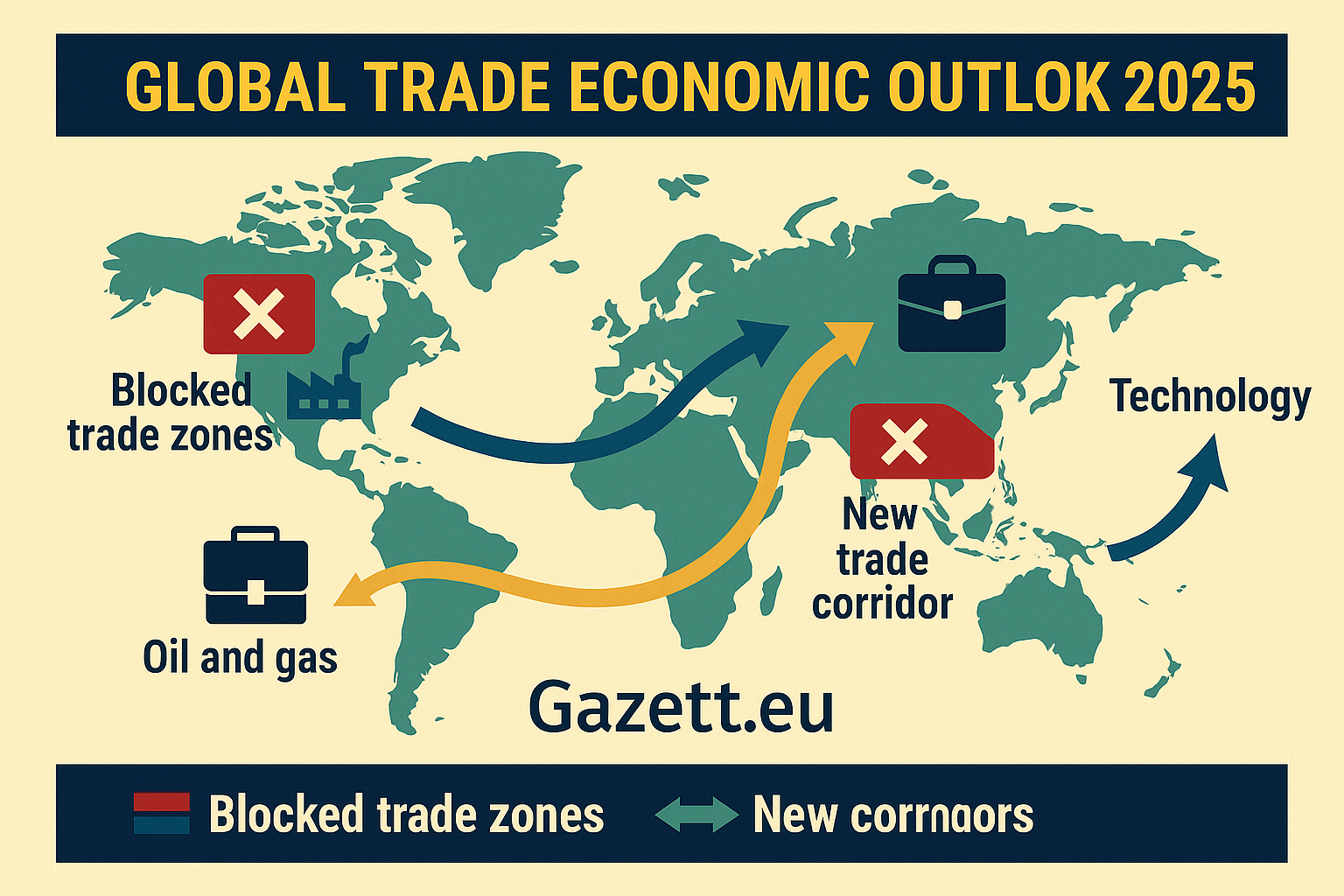
📘 Table of Contents
- Global Growth Forecast: Winners & Risk Zones
- Geopolitical Tensions: Supply Chains in Conflict Zones
- Trade Bloc Realignments: RCEP, EU, BRICS+
- Logistics & Freight: The New Corridors of 2025
- How Businesses Are Adapting: Strategy & Investment Trends
- Final Take: Preparing for a Multipolar Economic Future
📉 Global Growth Forecast: Winners & Risk Zones
The IMF’s April 2025 forecast projects global growth at 2.9%, slightly below the 2024 figure but more regionally uneven. While the U.S. maintains moderate momentum (~2.2%), Europe faces stagnation (~1.1%) amid inflation fatigue and political transitions. In contrast, India and Southeast Asia continue their strong upward curves, with India at 6.8% and Vietnam crossing 5.7%. Sub-Saharan Africa is also emerging as a growth frontier, led by fintech, infrastructure, and green transition projects.
Countries heavily reliant on Chinese demand or exposed to Red Sea disruptions (like Egypt or parts of the Gulf) are flagged as medium-risk trade zones. Meanwhile, diversified economies with nearshoring strategies — like Mexico, Poland, and Indonesia — are climbing the low-risk/high-growth chart.
- 🏆 High-growth zones: India, Vietnam, Indonesia, Mexico, UAE
- ⚠️ Caution zones: Egypt, Germany, South Africa, Brazil
- 🧊 Stagnant zones: UK, France, Japan, Argentina
Source: IMF World Economic Outlook, April 2025
Related: Top 10 Fastest Growing Economies 2025 – Gazett.eu
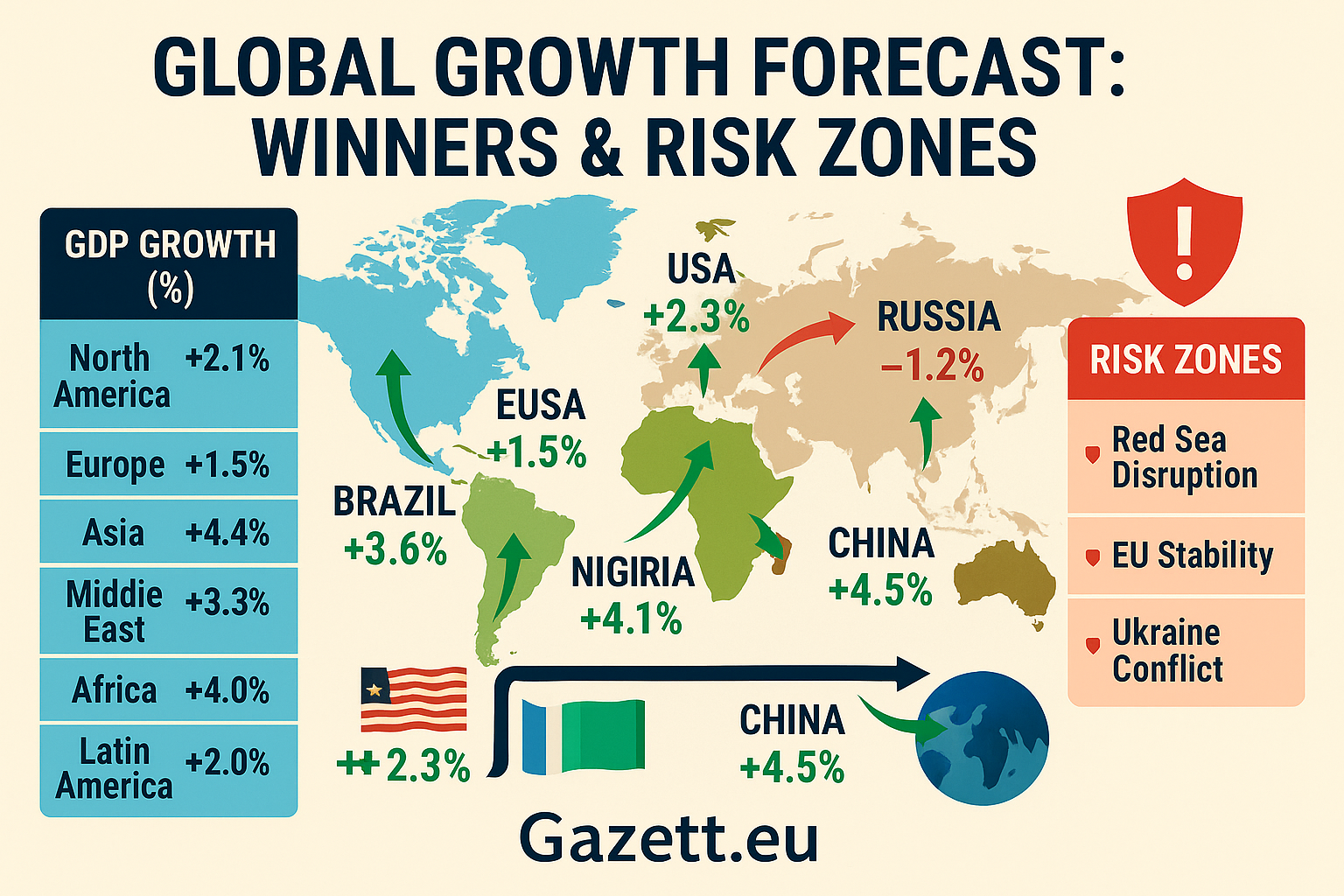
Gazett.eu infographic: Risk-Growth Map 2025 (based on IMF & World Bank data)
⚔️ Geopolitical Tensions: Supply Chains in Conflict Zones
From the Red Sea shipping crisis to renewed Taiwan Strait flashpoints, global supply chains in 2025 are under continuous strain. Major maritime routes such as the Suez Canal and Panama Canal have faced either delays, blockades, or rerouting challenges. These tensions have accelerated the strategic shift toward nearshoring and multi-modal logistics hubs in politically neutral regions.
- 🚢 Red Sea: Disruptions raised container rates 3x in Q1 2025
- 🇨🇳 Taiwan Strait: Heightened military presence delaying chip exports
- 🇺🇸🇲🇽 US-Mexico corridor: Fastest growing land logistics alternative
- 🇮🇳🇺🇸 India-U.S. corridor: Emerging air-sea hybrid route for semiconductors
As businesses diversify sourcing and shipping strategies, insurers have also increased premiums on geopolitical high-risk zones. “Geo-costs” are now a core metric in supply chain forecasting.
Source: Bloomberg – Red Sea Supply Chain Report
Related: EU Geopolitics in 2025 – Gazett.eu
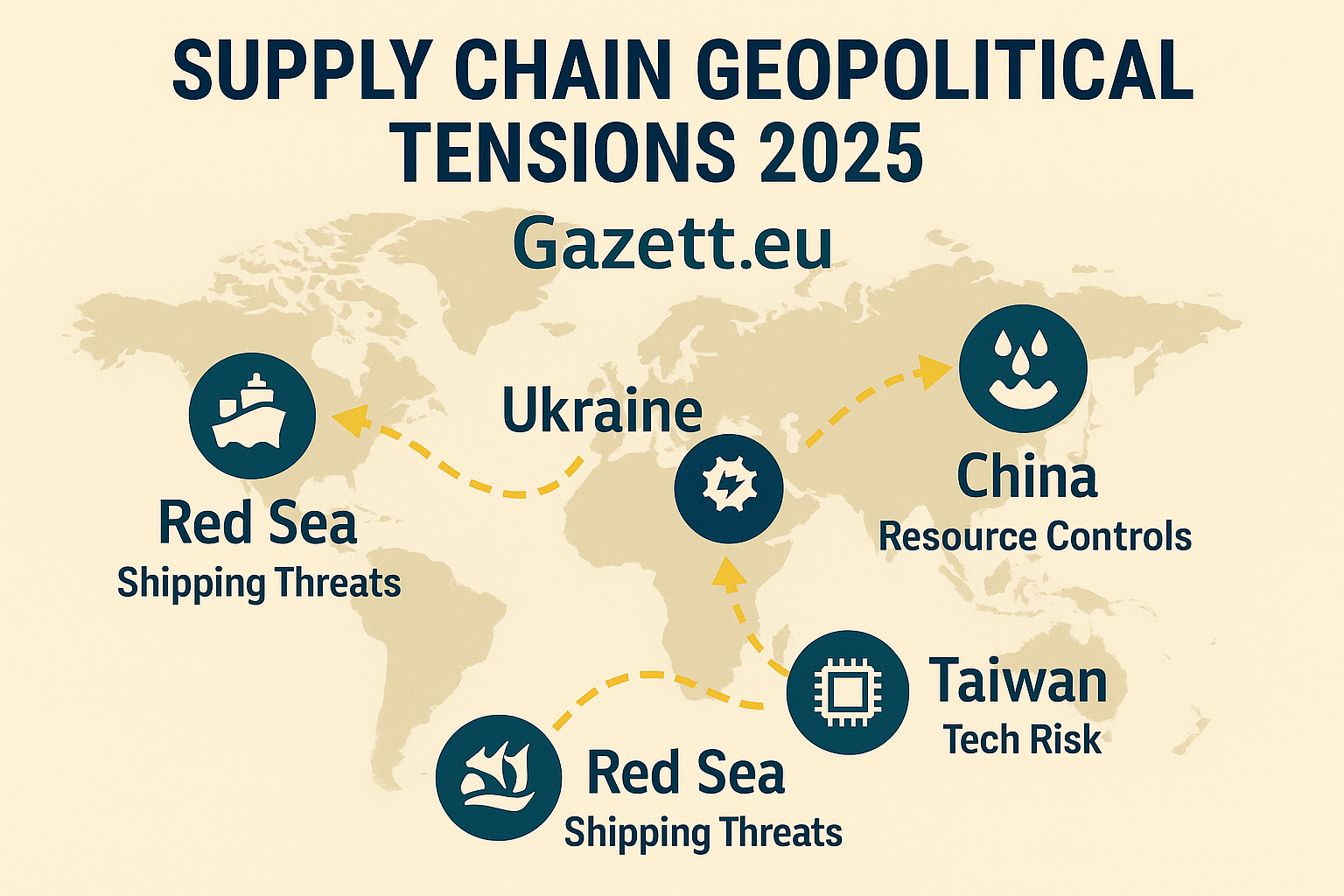
Gazett.eu infographic: Conflict Zones vs Trade Corridors 2025
🌐 Trade Bloc Realignments: RCEP, EU, BRICS+
As globalization fragments into strategic alliances, regional trade blocs are becoming the new backbone of commerce. In 2025, RCEP is growing stronger with new ASEAN initiatives, the EU is doubling down on internal tech and green subsidies, and BRICS+ is gaining traction with the entry of Egypt, Saudi Arabia, and Argentina.
- 🌏 RCEP: Now covers 31% of global trade, driven by intra-Asia demand
- 🇪🇺 EU: Carbon Border Adjustment Mechanism (CBAM) takes effect in July
- 🌍 BRICS+: Currency and trade agreements challenge USD hegemony
These shifts present both opportunities and risks. Businesses must adapt to rule-based fragmentation: operating across blocs now means mastering multiple digital standards, ESG expectations, and financial compliance regimes.
Source: World Economic Forum – Global Trade Architecture 2025
Related: EU's Rightward Shift – Gazett.eu
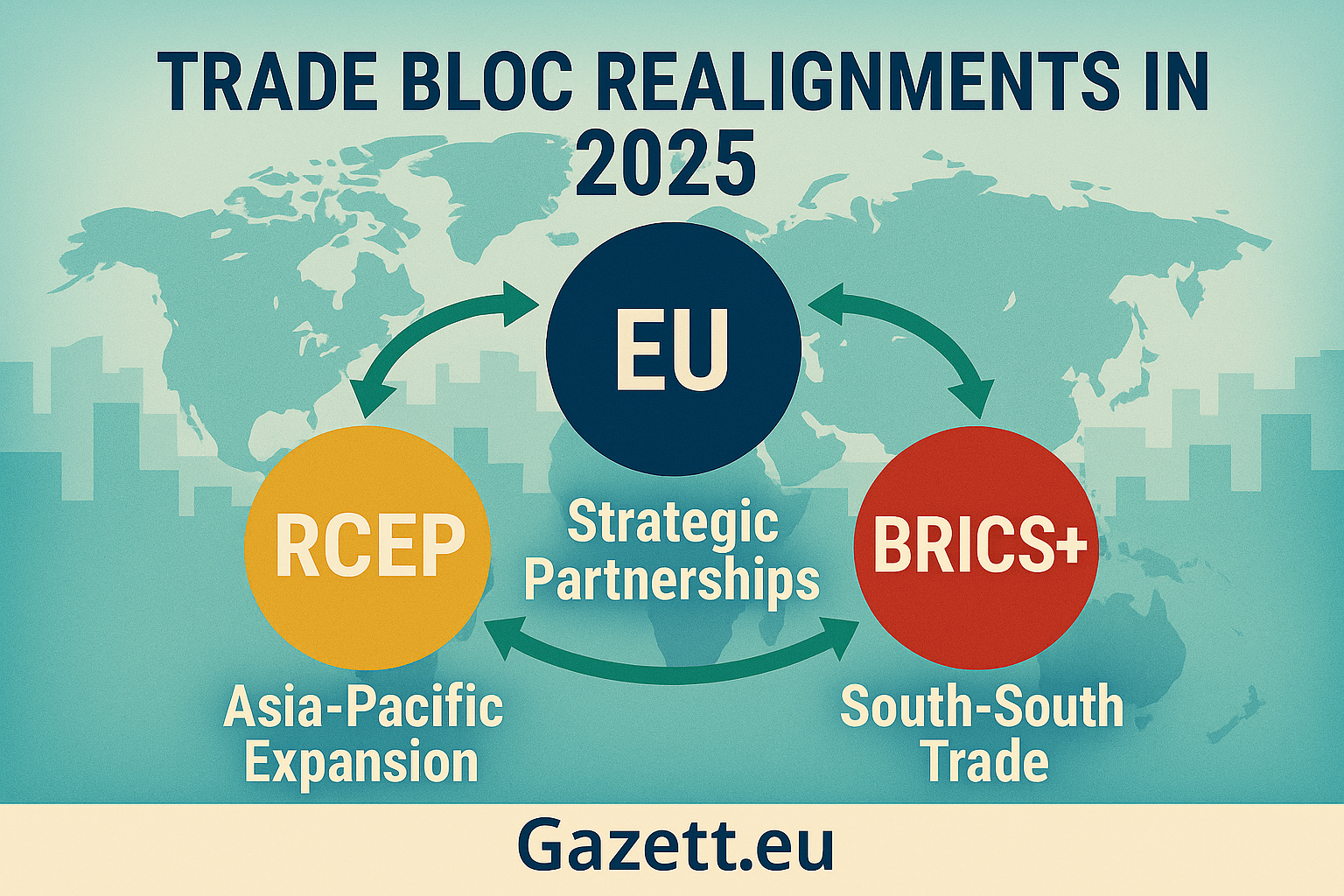
Gazett.eu infographic: RCEP, EU, and BRICS+ Trade Evolution
🚢 Logistics & Freight: The New Corridors of 2025
The global freight landscape in 2025 is no longer dominated by legacy sea routes. With geopolitical chokepoints and environmental goals in play, logistics is shifting to a blend of rail, air, and overland routes backed by digital optimization. India-Middle East-Europe Corridor (IMEC) has become a major alternative to the Suez. Meanwhile, China–Central Asia–Europe freight rail has gained popularity due to Red Sea bottlenecks.
- 🛤️ IMEC: Connecting Indian ports via UAE to Southern Europe
- 🚆 China-Europe rail: High-speed cargo via Kazakhstan and Poland
- 🛫 Air freight hubs: Doha, Singapore, and Frankfurt expand facilities
- 📦 Smart logistics: Blockchain, IoT tracking, and AI forecasting go mainstream
Ports like Rotterdam, Mumbai, and Haifa are now central to redesigned corridors. The shift toward resilient logistics also reflects in private sector investments — with companies allocating more to freight diversification in 2025 than in any year prior.
Source: Reuters – Global Freight Strategy Report 2025
Related: Meloni & Trump: EU–US Trade Links – Gazett.eu

Gazett.eu visual: Global Logistics Realignment 2025
📈 How Businesses Are Adapting: Strategy & Investment Trends
In response to fragmented markets and geopolitical risk, companies in 2025 are investing in diversified supply chains, sovereign tech stacks, and regionalised manufacturing hubs. The buzzword across sectors is "resilience-by-design". From German automotive firms nearshoring in Eastern Europe to Asian tech startups expanding into Africa, business models are adapting across borders.
- 🏭 Manufacturing shifts: China → Vietnam, Mexico, Poland
- 🧠 Talent relocation: Remote-first hiring fuels clusters in Portugal, Kenya
- 💼 Capital strategies: Investment rebalancing from West to East
- 💡 Digital hedging: AI-driven scenario planning, cloud-based risk models
ESG frameworks have matured too. In Q1 2025, over 78% of top 500 global firms updated sustainability benchmarks in trade and energy practices — especially those operating across the EU, UAE, and APAC.
Source: McKinsey – Economic Strategy Landscape 2025
Related: European Tech Unicorns 2025 – Gazett.eu
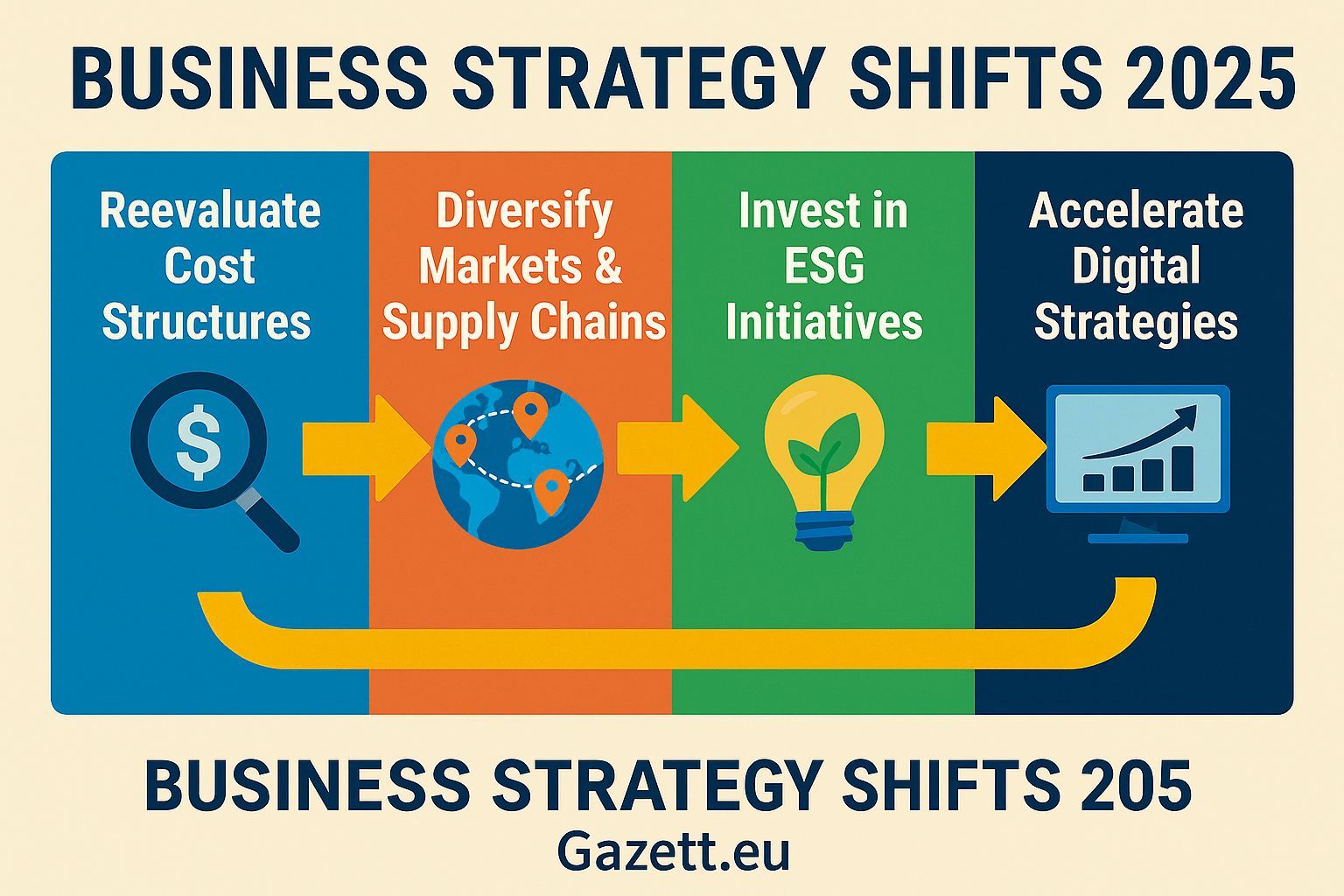
Gazett.eu infographic: Strategic Business Adjustments 2025
🧩 Final Take: Resilience, Regions & Reinvention
The post-pandemic global economy is not heading back to old norms. Instead, 2025 marks the pivot to a de-risked, regionalised trade system — where alliances matter as much as efficiency. The three defining shifts are: resilient supply design, region-based value chains, and reinvented digital trade governance.
- 🌍 Multipolar trade: No single dominant power, but alliances driving zones
- 📦 Autonomous logistics: AI-managed multimodal hubs rising in Asia, MENA
- 🔐 Digital sovereignty: Countries investing in national clouds, e-certification
The winners of 2025 are not just high-growth economies, but those capable of adapting quickly, building resilient institutions, and balancing national interests with global integration.
Source: OECD Global Outlook 2025
Related: Post-Macron France: Strategic Future – Gazett.eu
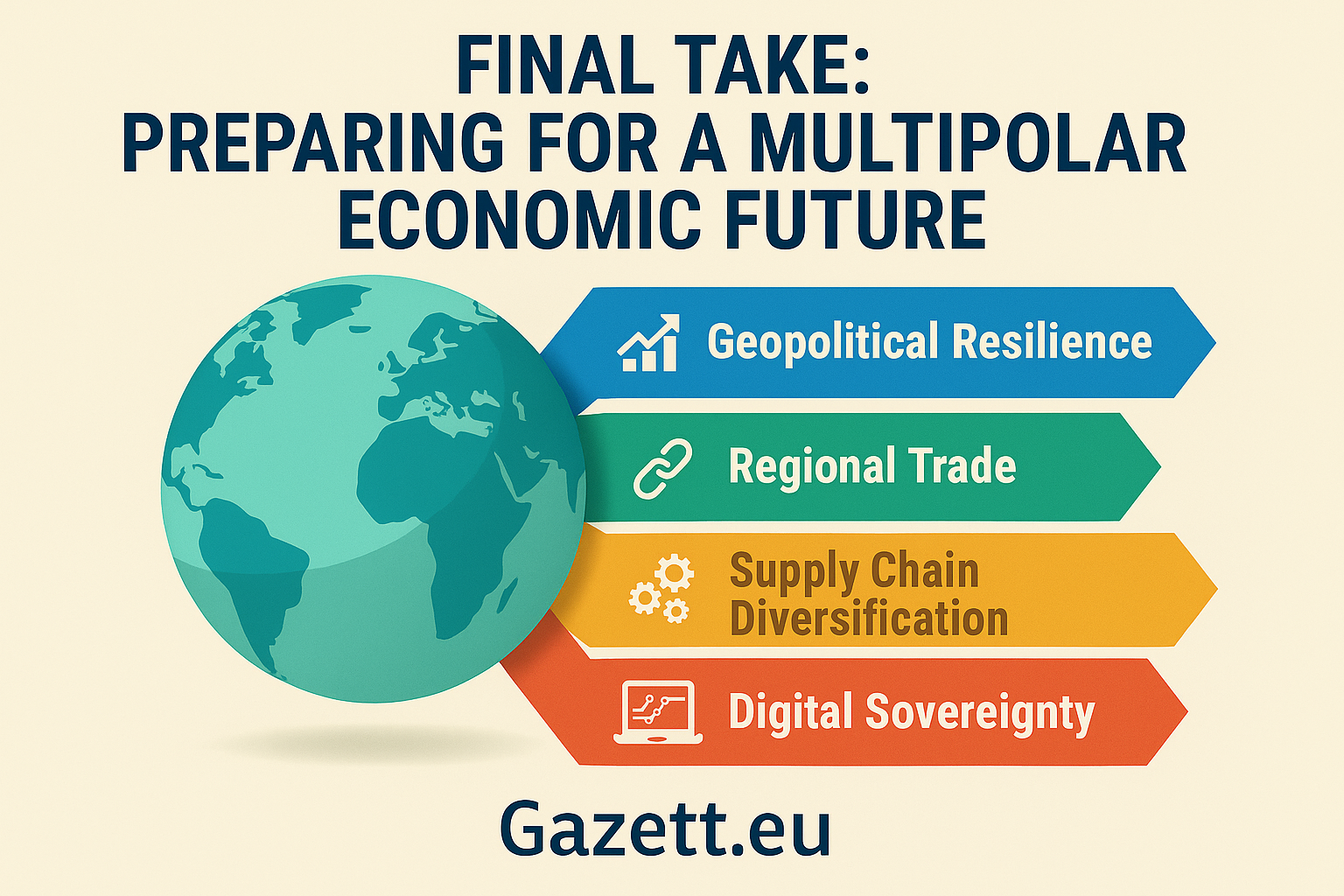
Gazett.eu infographic: Reinventing Trade & Resilience 2025